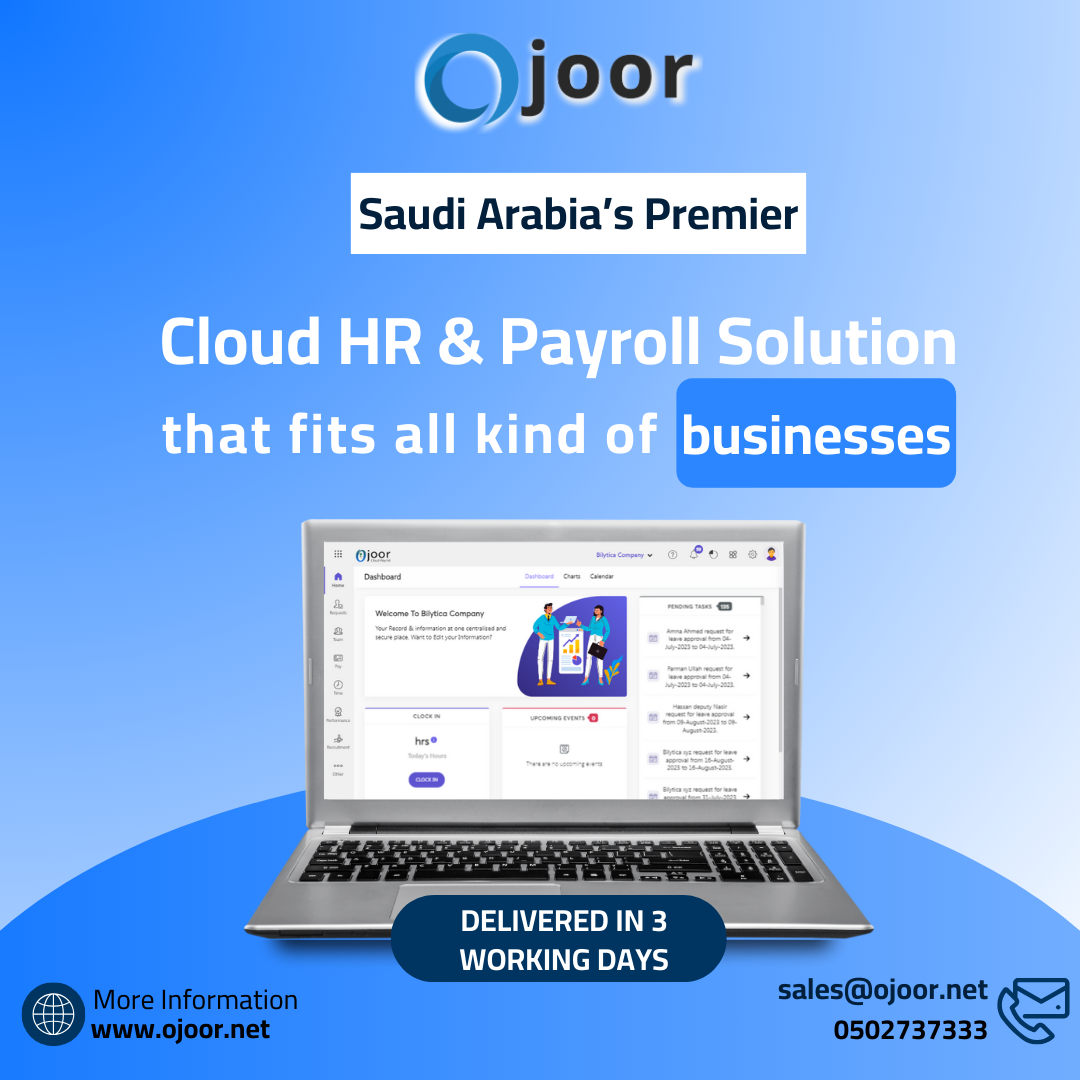Ojoor # 1 is one of the top Leave Management System and is essential for managing employee leave balances and accruals effectively. Proper handling of these aspects ensures that both employees and employers understand available leave, prevents scheduling conflicts, and maintains compliance with labor laws and company policies. This comprehensive overview details how an LMS handles leave balances and accruals, including the processes involved, key features, benefits, and best practices.
Click to Start Whatsapp Chatbot with Sales
Mobile: +966547315697
Email: sales@Ojoor.net
Ojoor #1 Leave Management System

Understanding Leave Balances and Accruals
Leave Balances: Leave balance refers to the amount of Leave Management System time an employee has available for use. This can include various types of leave such as vacation, sick leave, personal leave, and more. Accurately tracking leave balances is crucial for both operational efficiency and employee satisfaction.
Leave Accruals: Leave accruals are the process by which employees earn leave time over a period. This can be based on the length of service, hours worked, or specific accrual policies set by the organization. Common methods of accrual include monthly, yearly, or per-pay-period accrual.
Accrual Methods in a Leave Management System
An LMS supports various methods of leave accrual to accommodate different organizational policies:
Fixed Accrual: Employees earn a fixed amount of leave at regular intervals (e.g., 1.25 days of vacation per month).
b. Proportional Accrual: Leave accrual is proportional to the number of hours worked. For example, an employee may earn one hour of leave for every 20 hours worked.
Annual Accrual: Employees receive their entire annual leave allotment at the beginning of the year or after completing a certain period of service.
Graduated Accrual: Accrual rates increase based on the length of service. For example, employees may earn more leave per month after completing five years of service.
Lump Sum Accrual: A lump sum of leave is granted at specific intervals, such as at the beginning of the fiscal year or upon reaching a service milestone.
Setting Up Leave Accruals in an LMS
Policy Definition: Organizations define their leave accrual policies in the Leave Management System. This includes specifying the types of leave, accrual rates, eligibility criteria, and any carryover rules.
Employee Categorization: Employees are categorized based on factors such as employment type (full-time, part-time, temporary), tenure, and specific departmental policies. This ensures that the correct accrual rates are applied.
Accrual Calculations: The LMS automatically calculates leave accruals based on the defined policies and employee data. This calculation considers the employee’s start date, hours worked, and any other relevant factors.
Real-Time Updates: Leave balances and accruals are updated in real-time, reflecting any leave taken or newly accrued time immediately. This ensures that both employees and managers have accurate, up-to-date information.

Managing to Leave Balances
Viewing Leave Balances: Employees can view their current leave balances through a self-service portal or mobile app. This transparency helps employees plan their leave and understand how much time they have available.
Leave Requests and Adjustments: When employees submit LMS training in Saudi Arabia requests, the LMS automatically adjusts their leave balances upon approval. If leave is denied or canceled, the balance is reverted accordingly.
Carryover Rules: The LMS enforces carryover rules as defined by the organization. This can include carrying over a certain amount of unused leave to the next year or forfeiting unused leave at the end of a period.
Negative Balances: Some organizations allow employees to take leave in advance, resulting in a negative leave balance. The LMS can track these negative balances and adjust future accruals accordingly.
Leave Encashment: In cases where employees can cash out unused leave, the LMS can manage and process these transactions, ensuring accurate leave balances are maintained.
Compliance and Legal Considerations
Labor Law Compliance: The LMS ensures compliance with local, state, and federal labor laws regarding leave accrual and balances. This includes adhering to minimum leave entitlements, carryover regulations, and any other legal requirements.
Policy Enforcement: The system enforces company-specific leave policies consistently, ensuring that all employees are treated fairly and according to the defined rules.
Audit Trails: An LMS maintains an audit trail of all leave transactions, including accruals, requests, approvals, and adjustments. This is essential for legal compliance and resolving any disputes.
Integration with Payroll and HR Systems
Seamless Integration: An LMS integrates seamlessly with payroll and HR systems to ensure accurate payroll processing and compliance with HR policies. Leave taken is reflected in payroll calculations, preventing overpayment or underpayment.
Data Synchronization: Regular data synchronization ensures that leave balances and accruals in the LMS match those in the payroll and HR systems. This eliminates discrepancies and ensures accurate record-keeping.
Centralized Management: Centralized leave management through integration allows HR to manage leave policies, track compliance, and generate reports from a single platform.
Reporting and Analytics
Leave Usage Reports: The HRMS in Saudi Arabia provides detailed reports on leave usage, showing trends and patterns in how leave is taken across the organization. This helps in identifying peak leave periods and planning staffing needs.
Accrual Reports: Accrual reports show how leave is accrued over time, helping HR understand the impact of different accrual policies and make necessary adjustments.
Compliance Reports: Compliance reports ensure that the organization meets all legal requirements regarding leave management. These reports can be used for internal audits or external regulatory reviews.
Customizable Dashboards: HR and management can use customizable dashboards to view key metrics related to leave balances, accruals, and usage at a glance.
Employee Self-Service Features
Access to Leave Information: Employees have access to their leave balances, accruals, and leave history through a self-service portal or mobile app. This transparency empowers employees to manage their leave effectively.
Leave Planning Tools: Tools such as leave calculators and planners help employees schedule their leave based on their available balance and upcoming accruals.
Notifications and Reminders: Automated notifications and reminders inform employees about low leave balances, upcoming leave, and pending approvals. This ensures timely action and reduces manual follow-ups.
Conclusion
A Leave Management System (LMS) plays a vital role in handling leave balances and accruals efficiently and accurately. By automating the accrual process, providing real-time updates, integrating with payroll and HR systems, and offering comprehensive reporting and analytics, an LMS ensures effective leave management. It enhances transparency, compliance, and employee satisfaction while reducing administrative burdens. Implementing best practices such as clear policy communication, regular reviews, and employee support further ensures the system’s success. As organizations continue to embrace digital solutions, an LMS remains a critical tool for managing leave and maintaining a productive and satisfied workforce.
Click to Start Whatsapp Chatbot with Sales
Mobile: +966547315697
Email: sales@Ojoor.net
HRMS in Saudi Arabia
HRMS in Saudi Arabia
HRMS in Saudi Arabia
How does your system handle Leave Management System? similar software solutions prices were updated on 2025-11-27T12:41:18+00:00 in Saudi Arabia in Mecca, Medina, Riyadh, Khamis Mushait, Yanbu, Jeddah, Dammam, Unaizah, Uqair, Ha’il, Ta if, Al Bahah, Dhahran, King Abdullah Economic City, Najran, Diriyah, Qatif, Khafji, Jubail, Abqaiq, List of Cities and Towns in Saudi Arabia, Ras Tanura, Turubah, Jazan Economic City, Knowledge Economic City, Medina, Khobar, Abha, Tabuk, Saudi Arabia, similar software solutions prices were updated on 2025-11-27T12:41:18+00:00 We also provide in Saudi Arabia services solutions company in Hafar Al-Batin, Udhailiyah, Al-Awamiyah, Hofuf, Hautat Sudair, Buraidah, Tayma, Duba, ‘uyayna, Saihat, Al-Kharj, Al-ula, Jizan, Rumailah, Ar Rass, Arar, Shaybah, Al Majma’ah, Rabigh, Dhurma, Haradh, List of Saudi Cities by Gdp Per Capita, Badr, Sudair Industrial City, Baljurashi, Shaqraa, Al-Khutt, Habala, Ad Dawadimi, Dawadmi, Layla, similar software solutions prices were updated on 2025-11-27T12:41:18+00:00 Price is SAR 100 and this was updated on updated on 2025-11-27T12:41:18+00:00 similar How does your system handle Leave Management System? software solutions prices were updated on 2025-11-27T12:41:18+00:00 in Saudi Arabia in Haql, Afif, Al-Abwa, Farasan, Al-Jaroudiya, Thadig, Al-Thuqbah, Al Wajh, Almardmah, Al-Zilfi, Muzahmiyya, Prince Abdul Aziz Bin Mousaed Economic City, Tharmada’a, Skaka, Um Al-Sahek, Sharurah, Tanomah, Bisha, Dahaban, Al Qunfudhah, Qurayyat, Saudi Arabia, Ha’ir, as Sulayyil, Al Lith, Turaif, Al-Gway’iyyah, Samtah, Wadi Ad-Dawasir, Az Zaimah, Safwa City, Jalajil, Harmah, Mastoorah, Hotat Bani Tamim, Jabal Umm Al Ru’us, Rafha, Qaisumah, Al-Ghat, Hajrah, Al-Hareeq. Excerpt: Jeddah (also spelled Jiddah, Jidda, or Jedda; Arabic: Jidda) is a Saudi Arabian city located on the coast of the Red Sea and is the major urban center of western Saudi Arabia similar software solutions prices were updated on 2025-11-27T12:41:18+00:00 Price is SAR 100 and this was updated on updated on 2025-11-27T12:41:18+00:00
17-5-2024



